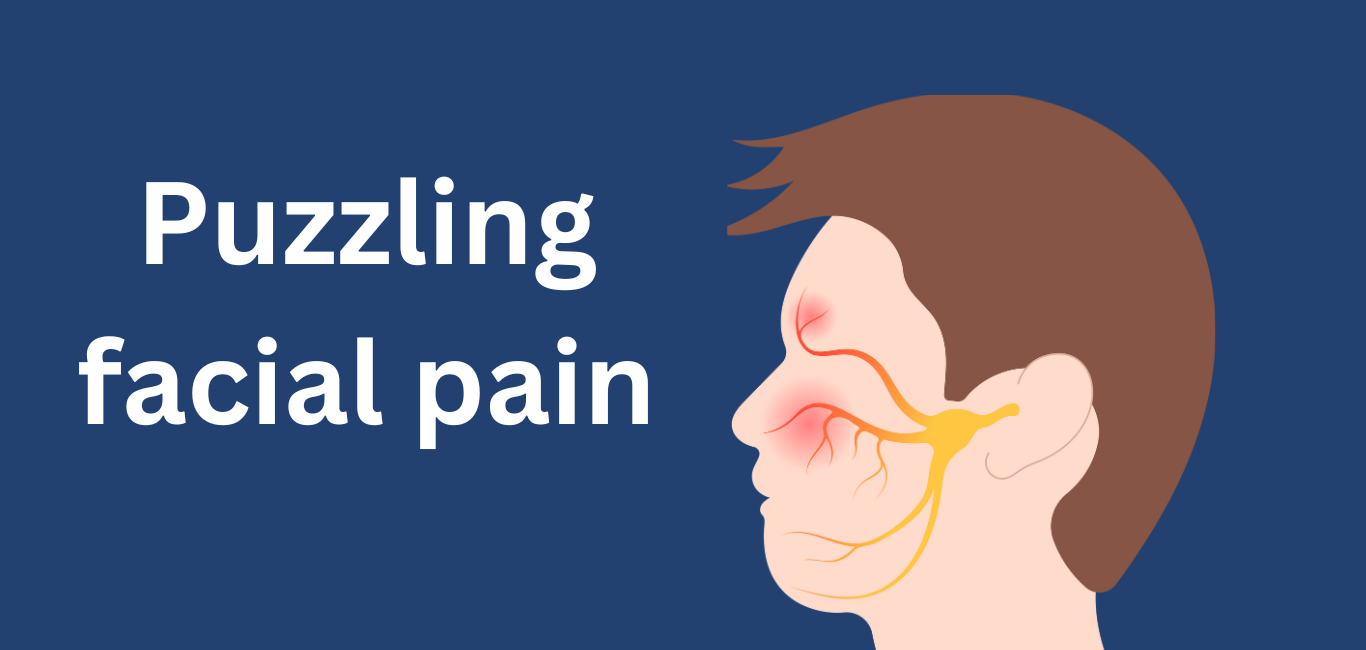
Picture experiencing a root canal procedure without the use of local anaesthesia. Now, imagine experiencing this pain every day while brushing your teeth, eating, or simply smiling. This is the daily reality for individuals with trigeminal neuralgia. Also called tic douloureux, trigeminal neuralgia is a severe form of facial pain, usually occurring in short, unpredictable episodes.
Emma Marrison-Taylor, 32, national health service project manager from Derbyshire, England, was diagnosed with trigeminal neuralgia at 29, months after she underwent a procedure to remove the extra cartilage growing in her nose. Taylor says that the pain can be the most severe of all the conditions that people with chronic pain experience.
Initially, she experienced frequent headaches and trouble breathing, progressing to intense pain that surfaced after six months post-operation, she says. “I queried why the pain was so relentless and sometimes became so bad that I couldn’t move, speak, or open my eyes. At that point, it became clear that something was wrong, but the diagnosis came much later,” adds Taylor.
Nerve-racking
The pain comes from a nerve called the trigeminal nerve, which is responsible for sending signals from the brain to the eyes, face, teeth, and the muscles used in chewing. “The pain can occur spontaneously, or sometimes it can be caused by dental procedures and facial trauma,” says Dr Kannan V, consultant neurologist at Medicover Hospitals, Hyderabad.
The onset is often a persistent and intense pain in the upper or lower jaw, which can be initially confused with a severe dental infection. However, when this jaw pain continues, gets worse, or spreads despite dental treatment, it becomes evident that there is an underlying issue.
Dr Chandoorya C, consultant oral and maxillofacial surgeon, Chennai, Tamil Nadu, says that when a dentist suspects trigeminal neuralgia, they use local anaesthesia to identify which branch of the trigeminal nerve is involved. “That way, we rule out any issues with the main nerve trunk. Treatment depends on what is identified,” she says.
Sometimes, the pain is caused by a tumour pressing on the nerve or a condition like multiple sclerosis that harms the protective covering of the nerve.
Read more: A peek into the diverse world of neurons
Pain triggers
Despite its unpredictable nature, the pain attacks are set off by everyday facial activities, vibrations, or movements, says Dr Kannan. “Common triggers include routine activities like washing or drying your face, putting on or taking off makeup, brushing and flossing teeth, sipping hot or cold drinks, and engaging in conversations, smiling, or laughter,” he explains.
He adds that even the gentlest skin vibration, such as that caused by a mild breeze, can initiate a painful episode of trigeminal neuralgia. Taylor faces such a condition. She says, “So, leaving my house takes a lot of planning. I must keep scarves, hats, and balaclavas around in all weather, which can be difficult to balance with the sweating side effect.”
Moreover, shaving, touching certain areas on the face, chewing or yawning can also bring on pain, adds Dr Chandoorya.
The master messenger
The trigeminal nerve starts behind the ears and goes across the cheeks, jaw, lips, and nose. This nerve has three parts – the upper, middle, and lower. The pain depends on the part of the nerve that causes the issue.
“There are two types of trigeminal neuralgia, and the symptoms experienced depend on which type is present,” says Dr Kannan.
Type 1 involves intense pain, marked by pulsating sensations, burning, or electric-shock-like pain in the eyes, nose, lips, jaw, forehead, and scalp. These episodes last from a few seconds to minutes, intermittent periods of brief relief and may persist for up to two hours during each attack.
Type 2 is characterised by less severe and consistent pain but that which is distributed extensively. This continuous discomfort is interspersed by sporadic stabbing-like pain or burning sensations.
It is even possible to experience both types at the same time, which is called bilateral trigeminal neuralgia. “I am one of the unlucky few affected by both,” says Taylor.
Quest for relief
While trigeminal neuralgia can be progressive and significantly affect one’s life, various treatment options are available to help achieve a relatively pain-free and normal life. “Since triggering factors cannot be avoided, initially, medical care is given via antiepileptic [medicines] and muscle relaxants,” says Dr Kannan.
He recommends surgical interventions if medications do not provide sufficient relief or lead to intolerable side effects. “However, each procedure has its unique advantages and disadvantages,” he says.
Empowerment through knowledge
For anyone going through this, Taylor offers some advice:
- Be aware of the Trigeminal Neuralgia Association and their resources.
- Join online support groups; they can help immensely.
- If newly diagnosed, find out if heat or cold helps your pain. Most people find one or the other does.
- Raise awareness of the condition. The treatment options will not change without awareness and research.

















